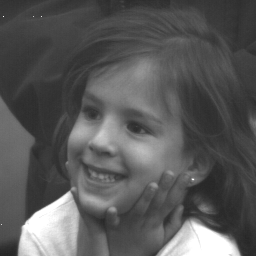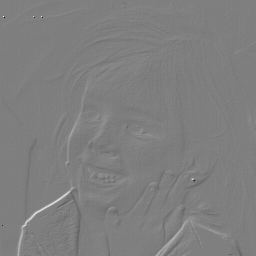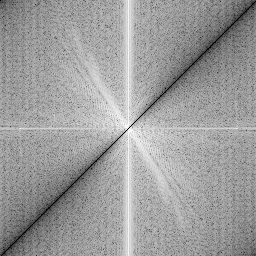

The illustration of this theorem is as follows
LEFT: original image, RIGHT: image convolved with Robert's kernel

When this type of operation is performed, we say that the processing is in the spatial domain.
We can take the forward DFT of the original image, also take the forward DFT of the extended convolution kernel, then multiply them together to obtain the DFT of the resultant filtered image.


DFT of original image ------------ DFT of the Roberts kernel


Multiplication of both DFTs -------- Inverse-DFT
When the processing is carried out by multiplying DFT's we say that the processing is done in the frequency domain.
To confirm the implementation algorithms (convolution and DFT), a subtraction is done between both results
Note that there are some differences on the top and left borders. The reason is due to the use of a linear convolution operator. If the circular convolution were used instead the difference image would be zero.
A consequence of the convolution theorem is that for any filter kernel in the spatial domain there is a correspondent filter in the frequency domain, and vice versa.
So when to use one or the other?
Computational speed indicates that convolution runs faster with smaller kernels and the DFT method runs faster if the kernel is large. What is small and large? Is there a threshold value for the size of a kernel?
In the case of filtering coherent noise the the design of the filter and latter processing is done in the frequency domain. Some simple operations like averaging, Gaussian filtering, Laplacian filtering, that use small kernels are frequently used in the spatial domain.
It is important to keep in mind that any linear and shift invariant filter can either be implemented using convolution or DFT tools.